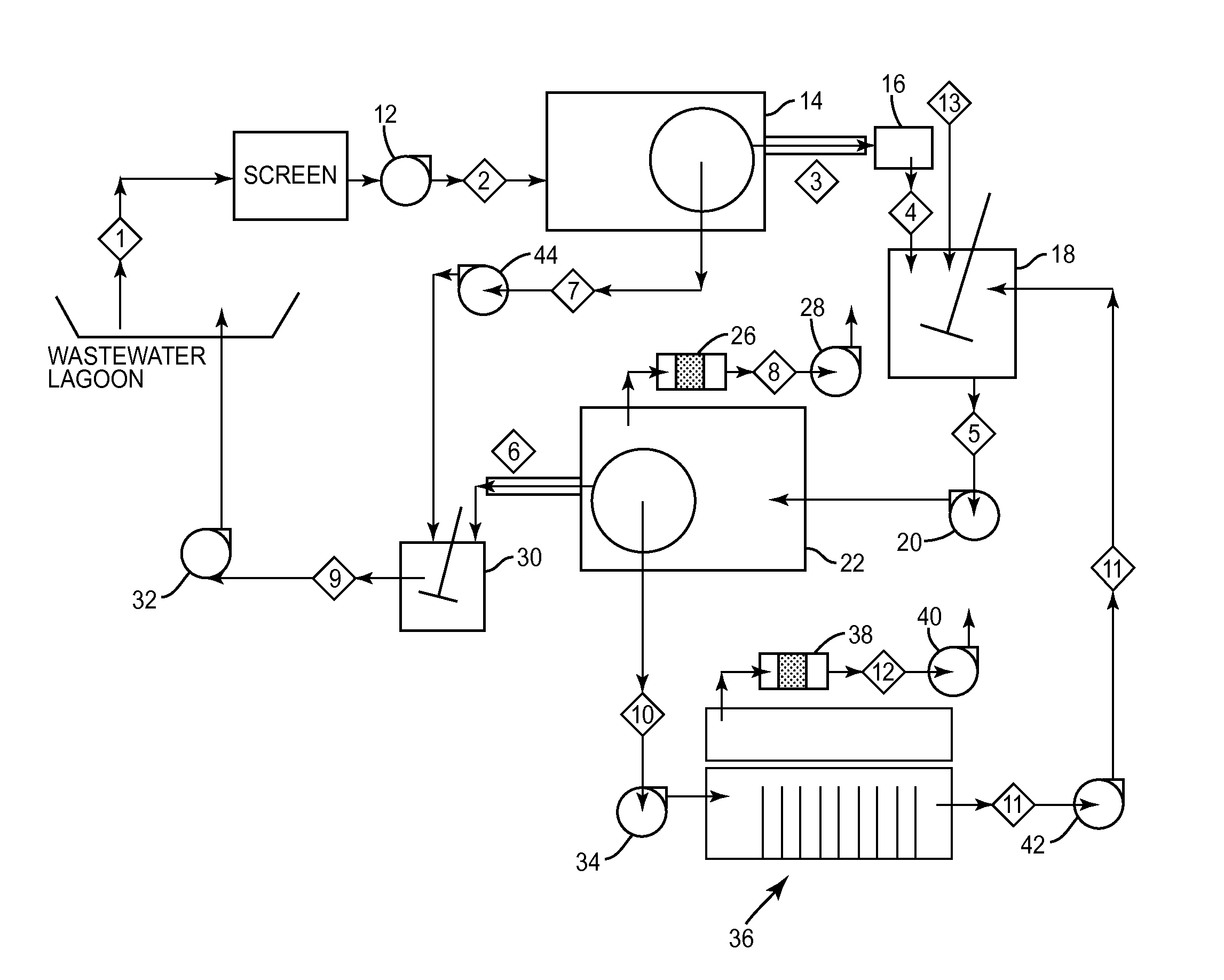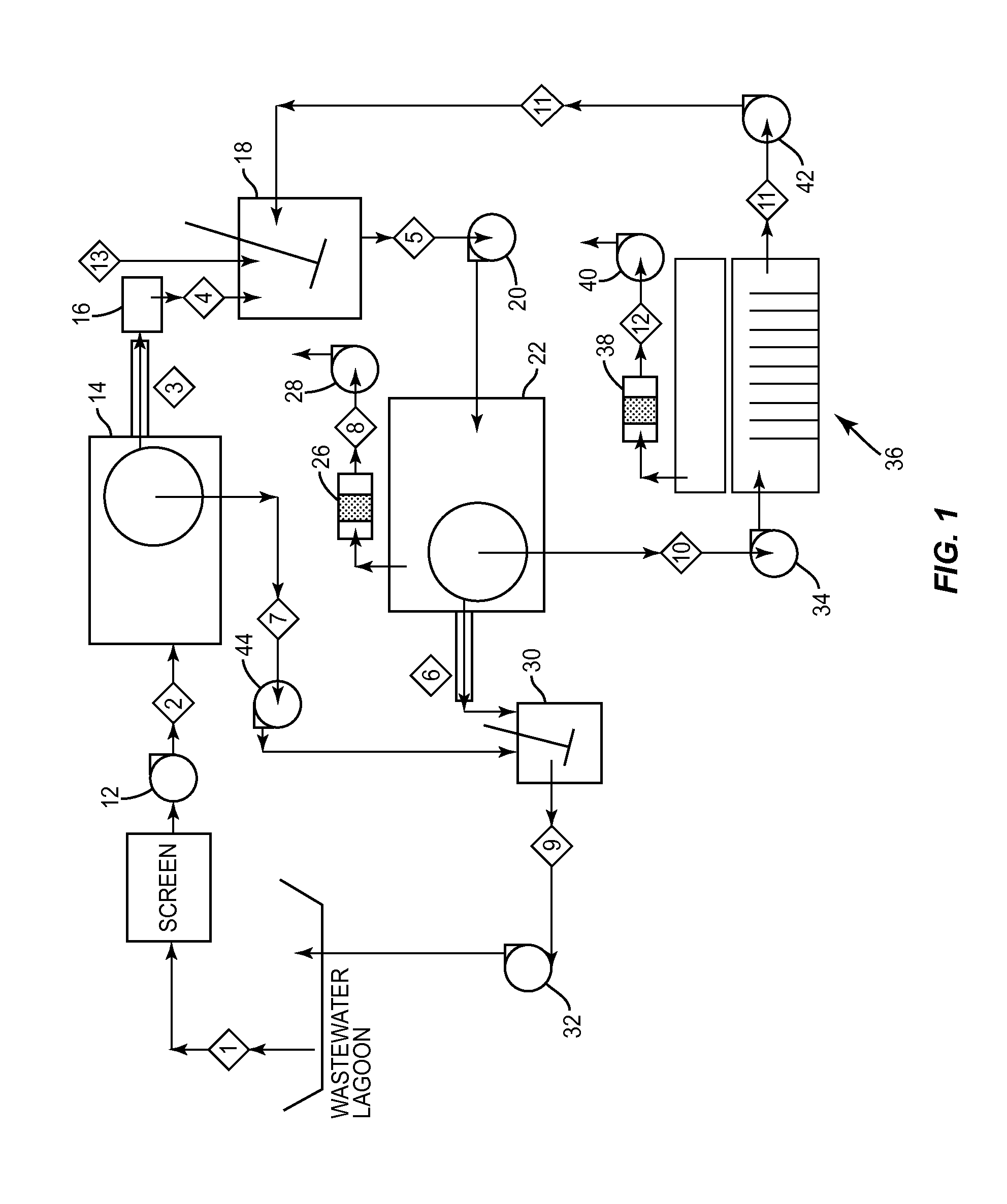PHOTOCHEMICAL PROCESS FOR THE LIQUID PHASE DESTRUCTION OF POLYCHLORINATED BIPHENYL COMPOUNDS, POLYCHLORINATED DIBENZO-p-DIOXIN, AND POLYCHLORINATED DIBENZOFURAN CONTAMINATED SLUDGES AND SOILS
a photochemical process and polychlorinated dibenzopdioxin technology, applied in the direction of sludge treatment with immiscible liquids, specific water treatment objectives, chemistry apparatus and processes, etc., can solve the problems of high cost of incineration, high risk of pcb and dioxin-furan contamination of excavation site and shipping routes, and the effect of maximizing uv light absorption
- Summary
- Abstract
- Description
- Claims
- Application Information
AI Technical Summary
Benefits of technology
Problems solved by technology
Method used
Image
Examples
Embodiment Construction
[0020]The present process, in one embodiment, removes PCB and dioxin-furan contaminated sludges or soils from their source location, filters the solids as necessary to remove water, extracts PCBs and co-present dioxin-furans from the solids using a solvent such as mineral oil, and employs UV treatment of the PCBs and dioxin-furans in the solvent or mineral oil solution. The filtered water and treated sludge is returned to the source location.
[0021]Contaminated sludge, for example, is removed from a wastewater pond, lagoon, lake or river using Diaphragm Pump 12. Sludge is pumped (stream 1) into a Screen to remove large objects that could damage the diaphragm pump 12. The sludge-water mixture is then pumped by Diaphragm Pump 12 (stream 2) into a filter such as a Rotary Vacuum Filter 14. The partially dried sludge or soil having a water content of approximately 10%-35% by weight is then conveyed (stream 3) to a Pulverizer 16. Pulverizer 16, in one embodiment, increases the exposed surf...
PUM
| Property | Measurement | Unit |
|---|---|---|
| temperature | aaaaa | aaaaa |
| temperature | aaaaa | aaaaa |
| size | aaaaa | aaaaa |
Abstract
Description
Claims
Application Information
 Login to View More
Login to View More - R&D
- Intellectual Property
- Life Sciences
- Materials
- Tech Scout
- Unparalleled Data Quality
- Higher Quality Content
- 60% Fewer Hallucinations
Browse by: Latest US Patents, China's latest patents, Technical Efficacy Thesaurus, Application Domain, Technology Topic, Popular Technical Reports.
© 2025 PatSnap. All rights reserved.Legal|Privacy policy|Modern Slavery Act Transparency Statement|Sitemap|About US| Contact US: help@patsnap.com


